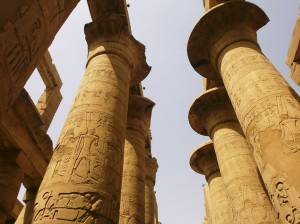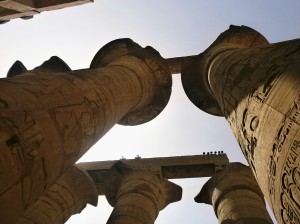
Royal Caribbean engineered a master class in damage limitation
We’ve seen it time and time again in the travel trade; an incident regarding an airline or a cruise line begins to register on the public consciousness; the company concerned goes into damage limitation mode, trying to ride the coat tails of a story that is already spreading like an atomic mushroom cloud, thanks to the internet. That is the stage where it can either be brought back onto an even keel, or go spectacularly wrong. In the last year, we’ve seen classic examples of both.
The focus of most brands is damage limitation, and that’s fair enough as far as it goes. It’s how you go about it that can determine just how strongly- or otherwise- a company rebounds from something that, all too often, cannot be helped.
A case in point is the current, tragic Malaysian Airlines Boeing 777 that came down last week, with over 220 people aboard. Here, the owners really are caught between a rock and a hard place; they have no concrete news to share (or at least none that has been declared fit for public consumption); the result is a nebulous void that has been filled to overflowing with every kind of poisonous quackery imaginable.
The sheer, ghastly impact of all of this on the relatives of those on board is unthinkable. And yet, time and time again, those same relatives are seen to reiterate the same, general theme; anger at Malaysian Airlines, and the constantly repeated mantra that they are not being told the truth.
And nothing is more damaging to any travel brand in a crisis; the perception- right or wrong- that they are not being up front. In the absence of news, perception assumes a life of its own. Rumours feed it. And so, too, does silence from the owners. To use an unfortunate pun, it’s a perfect storm.

Don’t want this to be the perception of your brand? Get pro-active….
For example, look at the ongoing, shabby farce that continues to surround the stalled QE2 regeneration project at Dubai. When they have actually deigned to communicate with the wider travel community, the owners have told one half truth after another, as well as making a whole raft of vague, woolly promises that have never materialised. Departure dates have come and gone with the regularity of planes at Dubai International.
The result? A complete and utter disconnect from the mainstream, to such an extent that nobody now believes a word that comes out of the owners’ mouths. The Dubai ownership of QE2 has squandered a huge amount of goodwill- and potential support- in their alleged efforts to revitalise the ship, and invest in her future. And, while the ‘gentlemen’ concerned are certainly awash with money, losing that kind of goodwill is not something that any savvy operator can afford. Once gone, it cannot be bought back.
Does it have to be like that? Nope. Consider the recent incident at Azamara Club Cruises, where the line’s Azamara Journey had a propeller blade problem that resulted in the premature end of one cruise, and an unscheduled dry docking for repairs. It could have gone horribly pear shaped.
Instead, all passengers on board were immediately told what had happened, as well as those scheduled to embark for the follow on cruise. Azamara CEO, Larry Pimentel, flew to meet the ship on arrival, and personally spoke to all those affected guests. The company provided compensation that satisfied all injured parties and- much more to the point- Pimentel did one crucially important thing.
He communicated.
Pimentel got pro-active, via social media such as Twitter, and sent frequent, on time updates across the internet. Not only that but, as repairs progressed, he sent out photographs of the work in progress.

Head in the clouds?
In so doing, he took the sting out of the story, and turned it right around. While seemingly obvious- and absolutely the right thing to do- this was an absolute master class in how to get it right, and the company deserves huge kudos for it’s initiative. It bought Azamara a priceless return in credibility and trustworthiness; one which will certainly work to the line’s advantage in the long term.
In a similar vein, when Royal Caribbean had a fire last year on Grandeur Of The Seas, the line adopted exactly the same tactic; tweeting updates on social media and Facebook, and dispatching CEO Adam Goldstein to meet the ship and her passengers in Nassau. All passengers were well compensated and, where necessary, put up in hotels and flown home, all at company expense.
And, crucially, all of this information was out in the public domain in real time; as it happened. Royal Caribbean ran with the narrative, pre-empting a tidal wave of potential, adverse press headlines and on line speculation.
Again, this was an object lesson in how to get it right. If only they could bottle and sell some of that savvy to the status conscious paladins of Dubai.

When heading toward the edge of a cliff, best not to floor the speed pedal…
The bottom line? Get pro-active. When potentially brand damaging stories begin to break, don’t just pull down the shutters, and hope that it will all just blow by. It won’t. You can’t grab the reins when you’re sitting in a bunker.
Because, when all is said and done, nothing amplifies the most scurrilous and unfounded rumour quite like official silence from the top. It creates a perception- right or wrong- that you are either aloof, disengaged, in denial or, worst of all, downright callous and/or incompetent.
That’s brand suicide.
Please feel free to share with friends and family





























